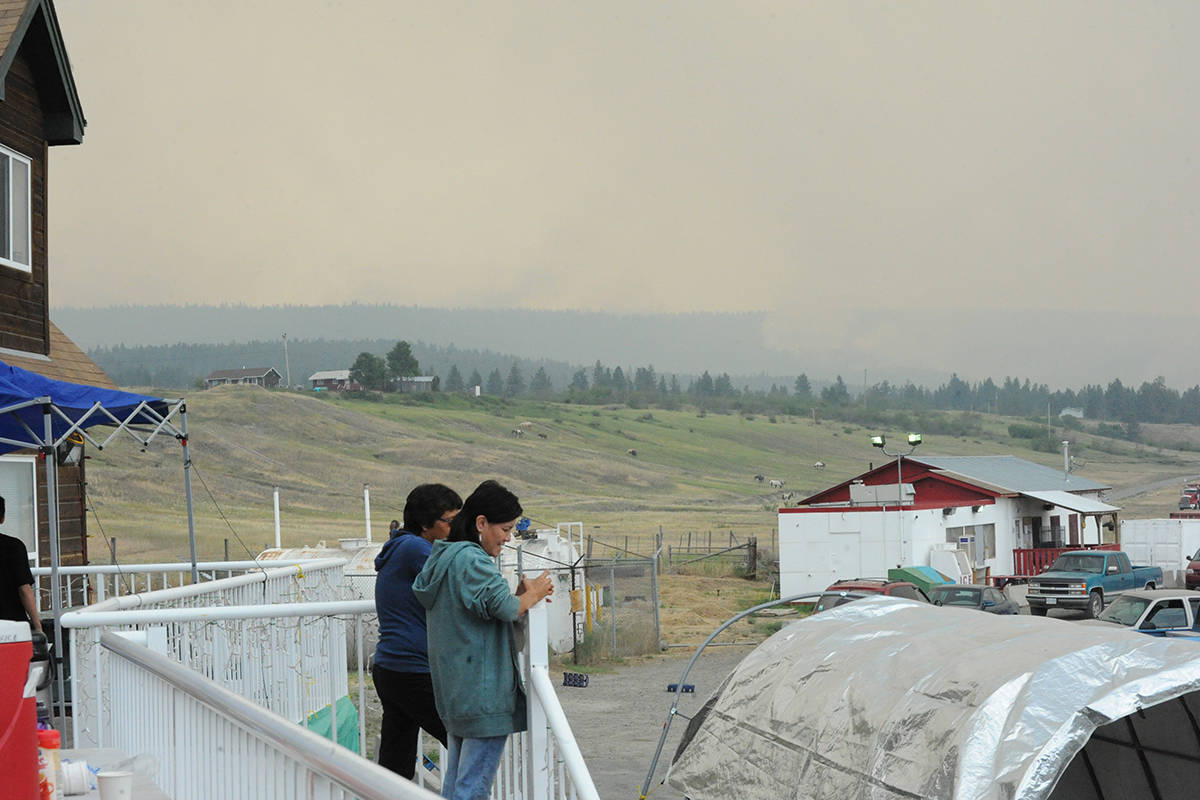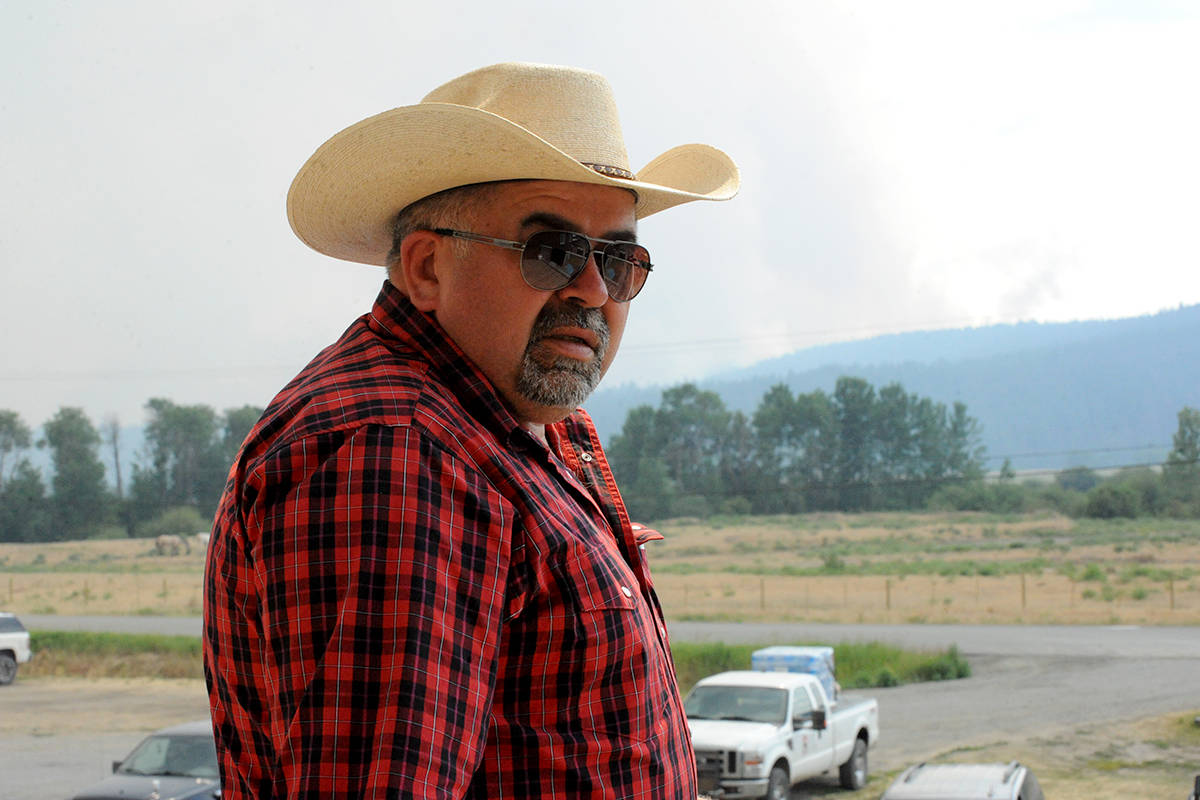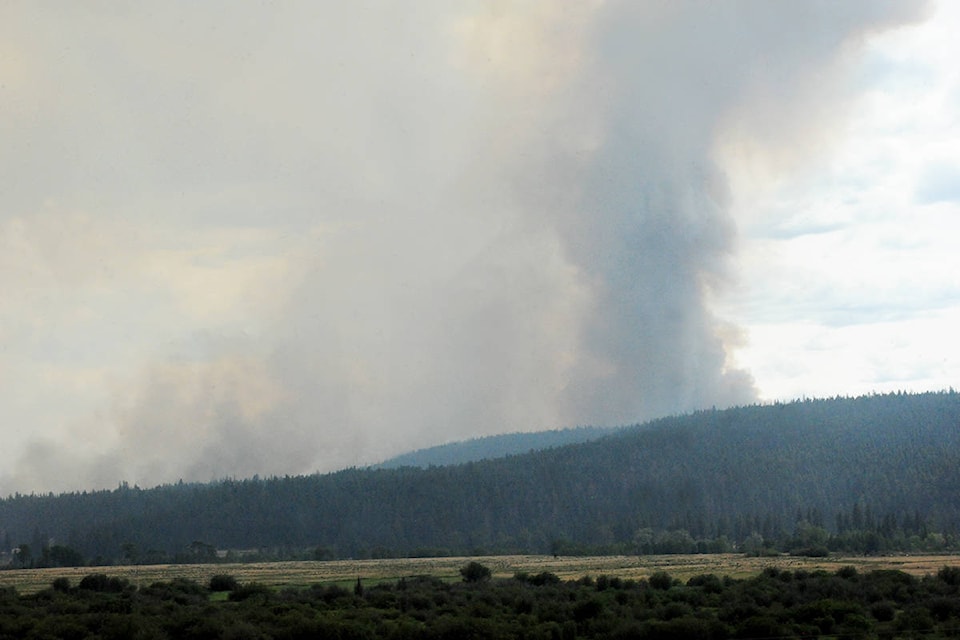Leaders of the Tsilhqot’in National Government (TNG) are pushing for meaningful partnerships and improved emergency management with the release of a comprehensive wildfire report, The Fires Awakened Us.
Born out of the catastrophic 2017 wildfires, the 120-paper report released Wednesday sets out what went wrong and documents what each of the six Tsilhqot’in communities went through during the disaster, as well as lists 33 calls to action for the future including recognition of inherent Indigenous jurisdiction in emergency response and recovery, improved equipment and infrastructure and enhanced processes and protocols.
Speaking at the joint announcement held at UBC, Tletinqox’in Chief and TNG Tribal Chair Joe Alphonse didn’t mince his words when recalling the day RCMP threatened to take the community’s children away for refusing to follow an evacuation order and the need for change.
Read More: Crews stop fire at the doorstep of Tl’etinqox community
“This is our experience, how we managed this and what we expect,” Alphonse said of the report. “Being First Nations in this country today is not an easy thing. We have to adhere to our own Indigenous ways of doing things and be respectful, until we have to accommodate INAC and the forest service and all of that.[The government] collects all the money they make off our land and then they control all that money, we’re placed in situations where we’re fighting and arguing trying to claw a little bit of that just so we can look after our own people. That won’t happen. If we are not heard, if we’re not listened to, … the next major big fire we’ll tell the forest service and everybody else to stay the hell out.”
In April 2018 the TNG entered into a Collaborative Emergency Management Agreement with Indigenous Services Canada (ISC) and the B.C. government that focuses on improving emergency management within the Tŝilhqot’in communities.
ISC has provided funding for the TNG to implement work under the CEMA, including funding toward an emergency management co-ordinator for one year, and a contribution toward a feasibility study regarding the creation of a regional emergency centre.
At the news conference Wednesday, Alphonse said his community was evacuated due to wildfires in the years leading up to the 2017 wildfires, and after those experiences they decided they could look after their own needs in an emergency better. He said his people were evacuated into non-First Nations gymnasiums or cafeterias in 2009 and 2010, where they didn’t have access to their own foods, felt isolated and alone.
“We said we would never do that again.”
Among many other items, the report calls for a need to develop a centralized Indigenous-led emergency centre in Tsilhqot’in territory with satellite sites to connect isolated or remote communities with advanced safety and emergency equipment. Alphonse said building houses that are more structurally sound and energy efficient with air purification systems on reserves are also needed.
“Something as simple as living in a fire zone … most of our homes are (built with) cheap plywood, cheap roofing. We need to change how we build,” Alphonse said, noting he also wants to bring awareness to First Nations communities to clean up and fire smart their yards.
Government spokespersons at the announcement said they recognized the “disproportional and devastating effect” the Hanceville Fire and Plateau Fire had on the six Tslihqot’in communities and the need to build trust for future partnerships.
“A lot of progress has been made in some of the areas of concern, but this report shows there’s still a lot of work to do,” said Doug Donaldson, B.C.’s Minister of Forests, Lands, Natural Resource Operations and Rural Development, in a press release. “The report itself is an output of the Collaborative Emergency Management Agreement. It’s a great starting point to come together and do things differently by incorporating the observations and knowledge of the Tŝilhqot’in people.”
Several other benefits have already flowed from the signing of the CEMA, the press release stated, including better working relationships with the TNG communities and the provision of more supports to ensure appropriate protection and response in the case of wildfires within the Tŝilhqot’in territory. These include improved access to training, better engagement with First Nations communities in the area on emergency management concerns, a structural protection unit trailer and enhanced First Nations involvement in wildfire protection and emergency management.
Read More: Tl’etinqox and RCMP continue reconciliation efforts post 2017 wildfires
“The Government of Canada stands with First Nations and all British Columbians every step of the way as they rebuild and recover from the devastation caused by wildfires and flooding in the past two years,” said Seamus O’Regan, federal Minister of Indigenous Services. “Thank you to the Tŝilhqot’in National Government for its report on the 2017 fires. It will help inform us as we work together to secure a new approach where First Nations are full partners in emergency management.”
Do you have a comment about this story? email:
editor@wltribune.com
Like us on Facebook and follow us on Twitter.


